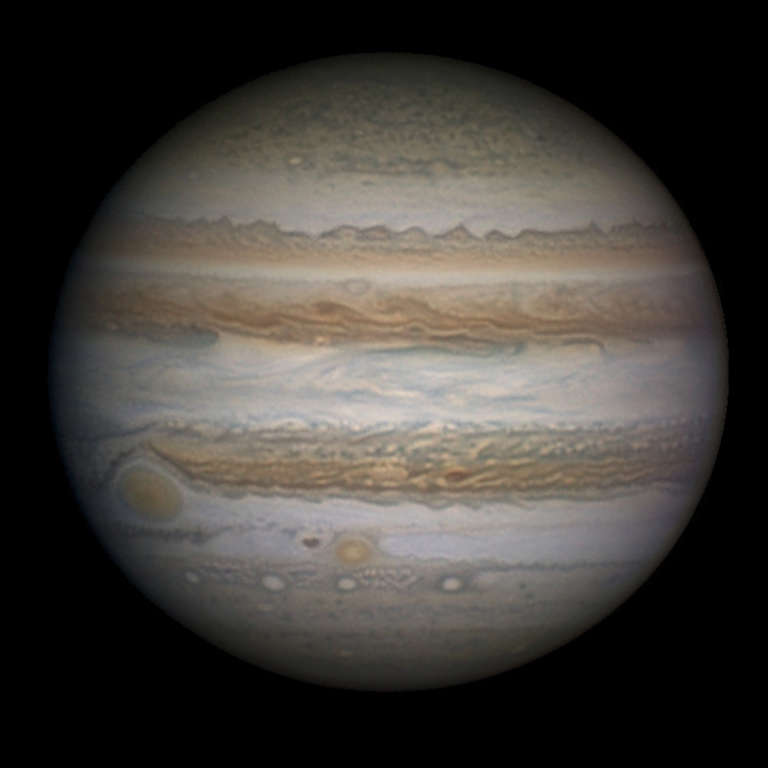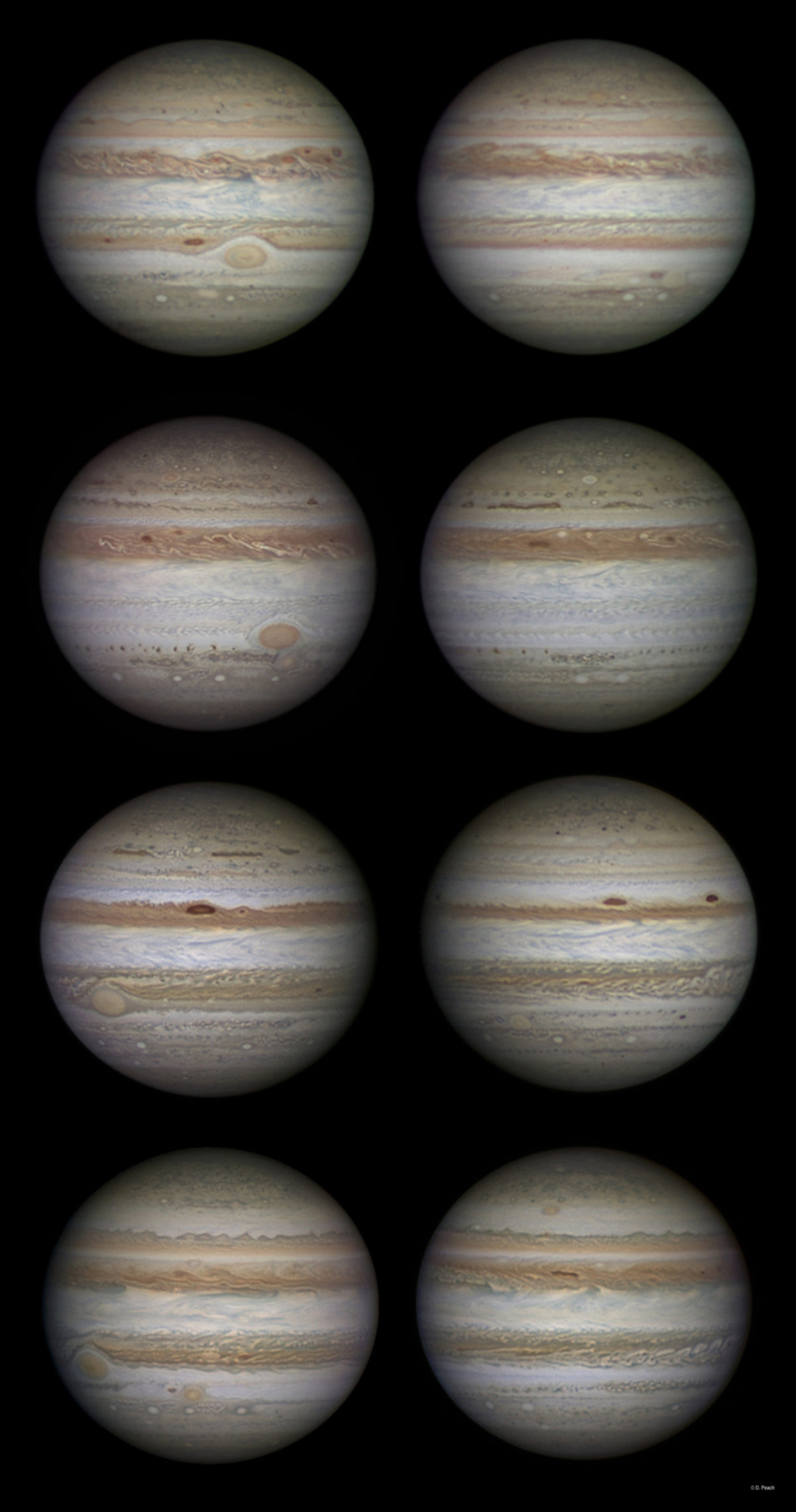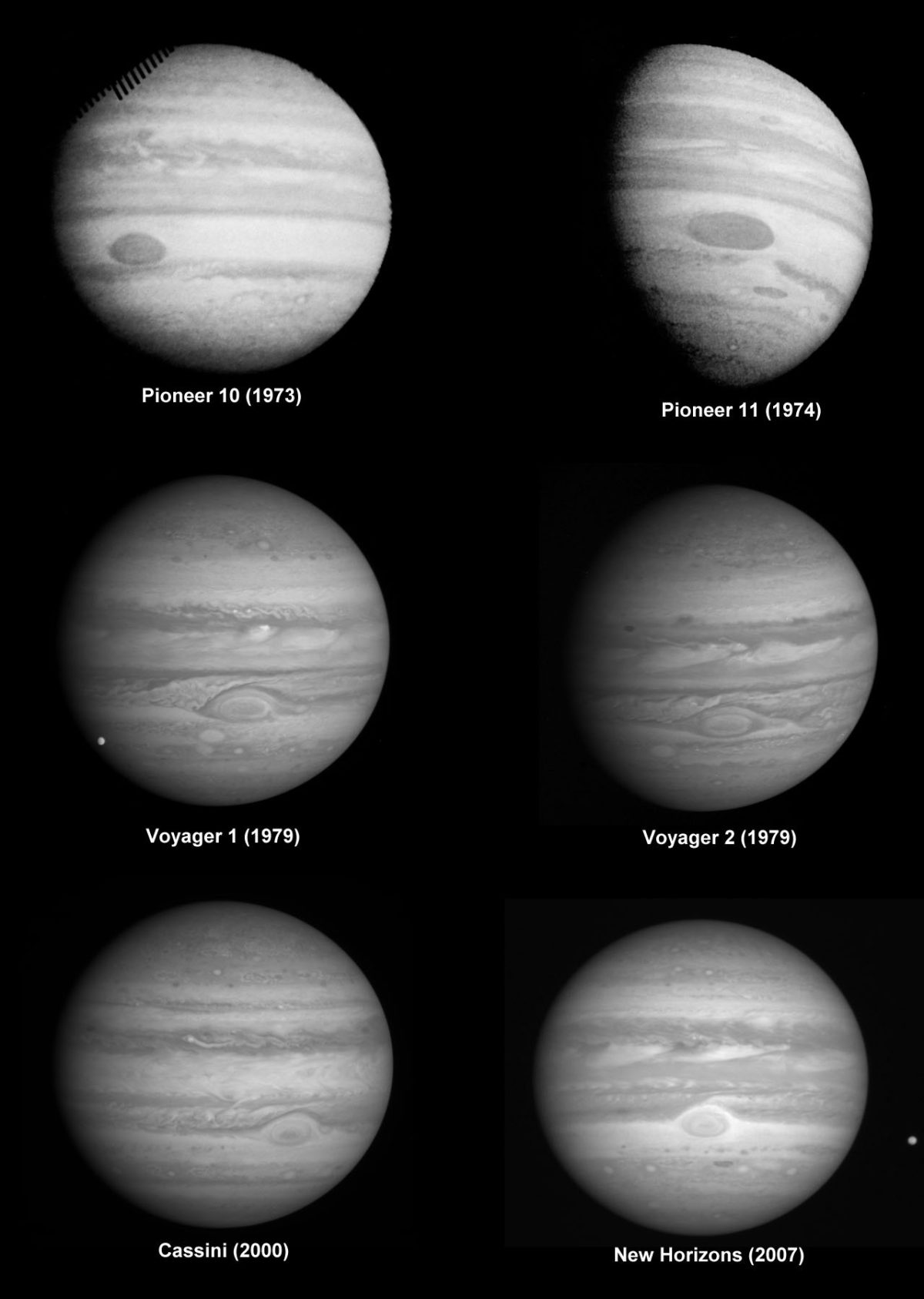Emily Lakdawalla • Mar 12, 2013
Checking in on Jupiter
When I'm looking for current pictures of Jupiter, there are three names that come to mind: Damian Peach, Anthony Wesley, and Christopher Go. These three amateurs specialize in photographing the planets. Together with lots of other amateurs they are building an invaluable record of Jupiter's changing face. The telescopes and equipment that they use for planet imaging are obviously of high quality but they are not outlandishly large -- Peach, Wesley, and Go are all using 14-inch (35-cm) telescopes (give or take a few cm) for their imaging. Their hobbies cost them roughly the same amount of money that other people might spend on a motorcycle or speedboat. Yet they are exploring the planets, and providing ongoing, night-after-night coverage that no professional can match. Here's what Jupiter looked like, a couple of months ago, near its opposition:

I spent a pleasurable day yesterday trawling Damian Peach's Jupiter photo archives. Here's a look at Jupiter from each of its last four oppositions. I picked two photos from each of the 2009, 2010, 2011, and 2012 oppositions, showing approximately opposite faces of Jupiter. Astonishingly, many of these photos were taken from his home in Selsey, West Sussex, in the United Kingdom, a country not known for having regularly cloudless skies (though Peach says that this town, which is on a promontory on the southern coast of England, enjoys clearer skies than typical UK locations). Peach also regularly visits an observing site in Barbados, which must be nice!

The changes from year to year are just fascinating. I've written before about the disappearance and reappearance of Jupiter's South Equatorial Belt, which is probably the most obvious of the time-varying features visible here. But there is so much more to see. Look at the region to the left of the Great Red Spot. Is it turbulent like when Cassini passed by, or smooth like when New Horizons passed by? Look at the color and banding within the Red Spot. Look, too, at the color of the Little Red Spot (also known as Oval BA). In 2009 and 2012 you can see that there's actually another Red Spot in Jupiter's northern hemisphere, a bit smaller than Oval BA. Check a red belt in any location in one year and see how different it appears in other years. The variety in the appearance of the northern hemisphere from year to year is fascinating.
For a bit more historical perspective, compare the views above to these six global views from the Pioneers, Voyagers, Cassini, and New Horizons:

I am glad there are amateur astronomers keeping an eye on Jupiter!
Let’s Go Beyond The Horizon
Every success in space exploration is the result of the community of space enthusiasts, like you, who believe it is important. You can help usher in the next great era of space exploration with your gift today.
Donate Today

 Explore Worlds
Explore Worlds Find Life
Find Life Defend Earth
Defend Earth

